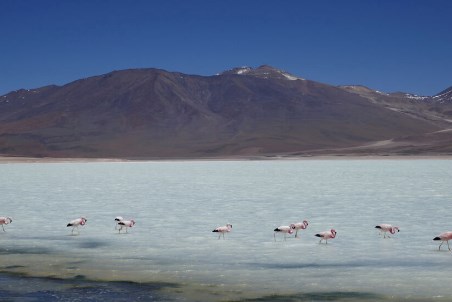Critical raw materials in South America: A key resource for the global energy transition
Published by Jody Dodgson,
Editorial Assistant
Global Mining Review,

From the active Pacific margin and the Andean range in the west to the cratonic terranes in the east, South America is rich in spectacular geological diversity. This diversity has also endowed it with a range of significant mineral deposits.
The region already plays a significant role in the global supply of raw materials. However, alongside global supply risks and an evolving geopolitical landscape, the accelerating global shift towards low-carbon, digital, and circular economies is increasing demand for critical raw materials (CRMs) such as lithium, cobalt, rare earth elements, and nickel. These materials are essential for clean energy technologies, electric mobility and advanced digital infrastructure.
South America is well positioned to significantly contribute to finding solutions to sustainable and secure supply of CRMs. It is a world leader in lithium, with half of global lithium resources found in the salt pan or ‘salar’ deposits of the ‘Lithium Triangle’ (Lundin Mining, 2025), including the salars of the Andes, which are some of the most extreme environments on Earth. The Lithium Triangle has a pivotal role to play in global decarbonisation, but complex economic, environmental, social, and political aspects need to be navigated, finding the right balance between equitable development, environmental protection, and social impact.
The continent is the world’s largest supplier of niobium and dominates the production of copper, and also boasts large supplies of other mineral commodities, including molybdenum, silver, tin, iron ore, and bauxite. Crucially, the region’s geology continues to deliver new world-class mineral deposits, as shown by Vicuña mineral resource, the largest greenfield copper discovery in the last 30 years (Global Finance, 2025).
Timely discovery, development, and responsible management of these resources is the foundation to incentivise and de-risk responsible investment in the mineral sector. This entirely depends on the availability and accessibility of fit-for-purpose, pre-competitive geological data and knowledge which is only possible through collaborative efforts. Furthermore, because supply chains are global, long-term sustainable solutions require international collaboration that strengthens governance frameworks, accountability, transparency and regional value addition.
The role of geological survey organisations (GSOs) in providing the necessary data and knowledge is fundamental to enabling government, industry and citizens to realise the benefits of the region’s mineral potential (Geoscience Australia, 2023). In addition to their traditional role around enabling exploration, GSOs play an increasingly important part in the provision of data and knowledge on the wider understanding of sustainable resource management and governance. This includes knowledge about mineral supply chains and environmental, social, and governance (ESG) priorities and challenges.
Partnerships between countries and with industry and civil society organisations are essential for developing and sharing good practices, as well as for building resilient and responsible mineral supply chains. To help meet this goal, BGS is working in partnership with multiple international organisations and are part of international events, including the World Mining Congress 2026 which is a key meeting point to foster strategic partnerships that can help accelerate the mineral supply chain. We are also particularly pleased to be working with other GSOs and counterpart organisations in the South American region, including those in Peru, Chile, and Brazil, on a range of mutual priorities, such as:
- Innovation in geological mapping and survey data delivery.
- Development of ESG frameworks.
- Research on critical mineral deposit models.
It is clear to see that the geological potential of South America will play a significant role in the global supply of CRMs, but it is the key partnerships that will play a vital role in ensuring robust resource governance and transparent, responsible supply chains for long-term benefit and value.
Image credit: BGS © UKRI.
Read the article online at: https://www.globalminingreview.com/mining/11112025/critical-raw-materials-in-south-america-a-key-resource-for-the-global-energy-transition/
